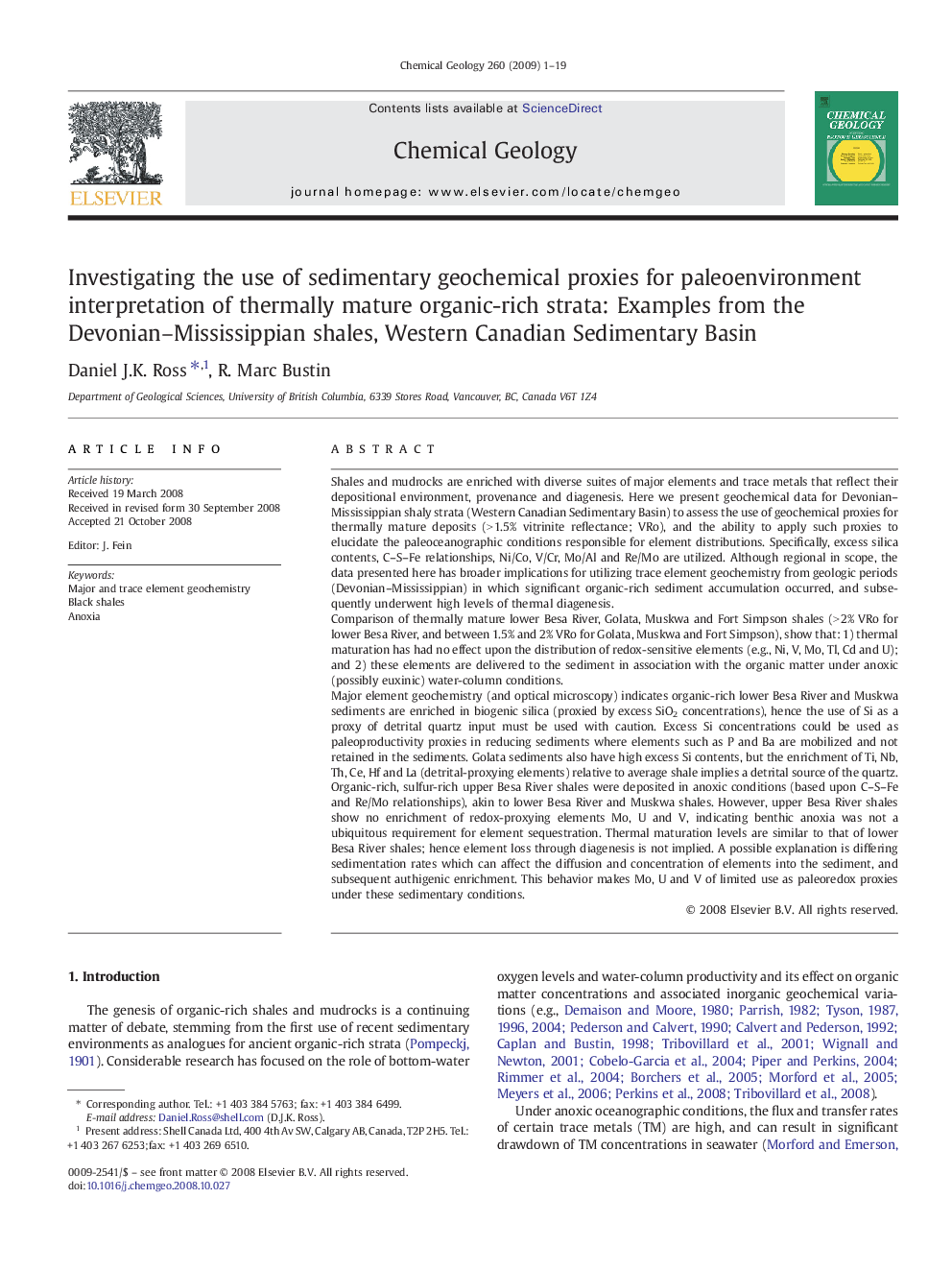| کد مقاله | کد نشریه | سال انتشار | مقاله انگلیسی | نسخه تمام متن |
|---|---|---|---|---|
| 4700551 | 1637712 | 2009 | 19 صفحه PDF | دانلود رایگان |

Shales and mudrocks are enriched with diverse suites of major elements and trace metals that reflect their depositional environment, provenance and diagenesis. Here we present geochemical data for Devonian–Mississippian shaly strata (Western Canadian Sedimentary Basin) to assess the use of geochemical proxies for thermally mature deposits (> 1.5% vitrinite reflectance; VRo), and the ability to apply such proxies to elucidate the paleoceanographic conditions responsible for element distributions. Specifically, excess silica contents, C–S–Fe relationships, Ni/Co, V/Cr, Mo/Al and Re/Mo are utilized. Although regional in scope, the data presented here has broader implications for utilizing trace element geochemistry from geologic periods (Devonian–Mississippian) in which significant organic-rich sediment accumulation occurred, and subsequently underwent high levels of thermal diagenesis.Comparison of thermally mature lower Besa River, Golata, Muskwa and Fort Simpson shales (> 2% VRo for lower Besa River, and between 1.5% and 2% VRo for Golata, Muskwa and Fort Simpson), show that: 1) thermal maturation has had no effect upon the distribution of redox-sensitive elements (e.g., Ni, V, Mo, Tl, Cd and U); and 2) these elements are delivered to the sediment in association with the organic matter under anoxic (possibly euxinic) water-column conditions.Major element geochemistry (and optical microscopy) indicates organic-rich lower Besa River and Muskwa sediments are enriched in biogenic silica (proxied by excess SiO2 concentrations), hence the use of Si as a proxy of detrital quartz input must be used with caution. Excess Si concentrations could be used as paleoproductivity proxies in reducing sediments where elements such as P and Ba are mobilized and not retained in the sediments. Golata sediments also have high excess Si contents, but the enrichment of Ti, Nb, Th, Ce, Hf and La (detrital-proxying elements) relative to average shale implies a detrital source of the quartz.Organic-rich, sulfur-rich upper Besa River shales were deposited in anoxic conditions (based upon C–S–Fe and Re/Mo relationships), akin to lower Besa River and Muskwa shales. However, upper Besa River shales show no enrichment of redox-proxying elements Mo, U and V, indicating benthic anoxia was not a ubiquitous requirement for element sequestration. Thermal maturation levels are similar to that of lower Besa River shales; hence element loss through diagenesis is not implied. A possible explanation is differing sedimentation rates which can affect the diffusion and concentration of elements into the sediment, and subsequent authigenic enrichment. This behavior makes Mo, U and V of limited use as paleoredox proxies under these sedimentary conditions.
Journal: Chemical Geology - Volume 260, Issues 1–2, 15 March 2009, Pages 1–19